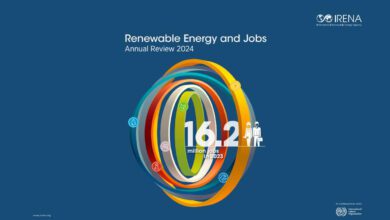In recent times as two of the world’s largest economies have imposed various trade restrictions against each other, India has been caught in a pincer by a torrent of cheap inflow of aluminium and scrap imports majorly from China as well as the United States. In FY20, there has been a 327% increase in the imports of aluminium scrap from US into India compared to the levels in FY15. India has overtaken China as the world’s largest importer of aluminium scrap, and the country has been adversely impacted due to recent global developments and US-China trade war further fuelled by China’s National Sword Policy measures to cut Scrap Imports substantially with stringent scrap standards and inclusion in restricted list of imports, government quota for import, and 25% tariffs Aluminium Scrap imports from USA. As India is a natural market, entire global chain of scrap has virtually shifted to India in the absence of any quality/BIS standards for recycling that most countries have established to protect the environment.
The absence of any stringent tariff and non-tariff barriers to check scrap imports are has created a precarious situation for Indian Aluminium industry and challenging its sustainability. Such high level of imports despite domestic capacity is also not in the spirit of country’s vision to become an Atma Nirbhar Bharat. India is the 3rd largest producer and consumer of Aluminium globally, still Indian Aluminium industry is currently plagued by increasing Aluminium and Scrap imports.
Despite having sufficient domestic Aluminium production capacity of 4.1 MTPA to cater country’s Aluminium demand of around 3.7 MTPA, currently 60% of country Aluminium demand is being met through imports primarily Aluminium Scrap imports. The Import share in the last two fiscals increased from 54% in FY18 to 58% avg. in FY19 and FY20., also there has been a substantial increase in Scrap imports as evident by share of Scrap in total Aluminium imports increased from 52% to 67% in last 5 years. This also resulted domestic market share for Indian primary producers declining from 60% in FY11 to 40% in FY20. and huge Forex out go of Rs 31,000 Crores in FY-20, i.e., ~1% of country’s total import bill.
This comes at a time when the Indian government is preparing to introduce a vehicle scrappage policy that would lead to scrapping of around 28 million decade-old vehicles, and that should ensure enough supply of indigenous scrap availability for domestic recycling.
The Indian Aluminium industry has sought immediate Government support to tide over this challenging phase by means of supportive measures in the forthcoming Union Budget 2021-22. The domestic industry has sought Government intervention to curb imports by raising the basic custom duty on primary aluminium and scrap imports to 10% from current 7.5% and 2.5% respectively, with scrap duty at par with primary metal in line with other non-ferrous metals like copper, zinc, lead, nickel, tin etc. Government also needs to safeguard interests of downstream industry by raising the duty on various downstream aluminium products to 10% and 12.5% respectively from 7.5% and 10% respectively.
In addition, institution of proper standards for Aluminium scraps is being demanded by Aluminium Association of India (AAI) as the first step to developing a nurturing ecosystem for the metal in the country. Post which, measures can be implemented to promote the circular economy and domestic recycling industry, and the utilization of indigenous scrap which will go a long way in reducing import dependency. Aluminium, as a green metal can engage over 10% of India’s population and benefit 25 focus sectors of Make in India It would be noteworthy that the recently issued National Non-Ferrous Metal Scrap Recycling Framework, 2020 by Ministry of Mines has also recommended to make the India’s Scrap Recycling industry a formal and organized sector to provide a good opportunity to cut down scrap imports. The framework also recommends establishing standards for quality of scrap used for recycling and recycling products, along with standard procedures for recycling and processing of scrap in the country.












